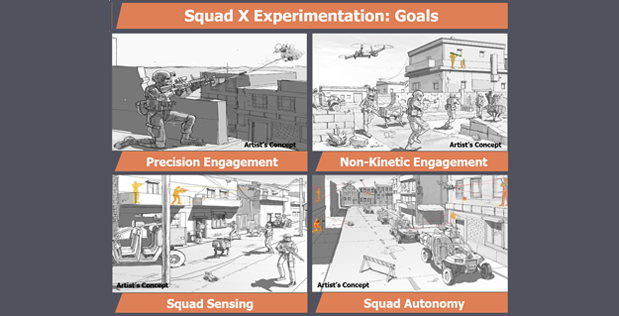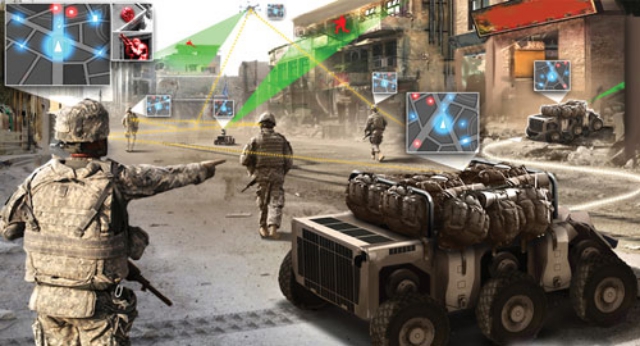The Squad X program will help the military to identify enemies even at night by using unmanned aerial vehicles’ scanning capability and robots following them
The Defense Advanced Research Projects Agency has kicked off its Squad X Core Technologies program in a bid to try and improve soldiers and Marines situational awareness in treacherous and degraded environments.
The agency, DARPA, plans to extend and enhance a rifle squad field of view. Major Christopher Orlowski, DARPA program manager for Squad X says the program aims to augment troops’ physical senses via acoustic and visual senses.

Another part of the program is providing small unit leaders who have an increased amount of time to make decisions, in turn helping them to shape and dominate their battlespace, the Major told the National Defense.
DARPA awarded nine phase-one contracts with relation to the program in the industry which included: Helios Remote Sensor Systems, Kitware, Leidos, Lockheed Martin, Raytheon, Scientific Systems Company Inc., Six3 Systems, Inc., SoarTech and SRI International.
The companies are poised to work in one of the four research areas which include; precision engagement, non-kinetic engagement, squad sensing, and squad autonomy.
Under precision management, the DARPA is looking for, ‘guided munitions capabilities that could be fired from current weapons platforms, Orlowski explained. This includes the M2, M3, and the M320grenade launchers. He also goes on to say companies can also propose solutions as to ‘ where they would leverage the Picatinny rail systems on the M4s and M16s.’
Under research area non-kinetic engagement, the DARPA agency is looking for technology is able to ‘disrupt enemy command and control, communications and use of unmanned assets at a squad-relevant operational pace, the Major explained.
Squad sensing wise, the agency wants the industry to produce technology that can sense and detect potential threats 0.6 miles away. Squad sense was focused on primarily identifying humans and unmanned systems within the environment and then determining whether or not those were threats. Technology in this area could include multi-source data fusion,” he explained.

For the squad autonomy area, the agency wants members to have at least ‘real-time knowledge of their own and teammates’ locations to less than 20 feet (6 meters) in GPS-denied environments through collaboration with embedded unmanned air and ground systems,” according to a DARPA released statement.
Military leaders have always campaigned for strengthening the systems that might be affected by anti-access/area denial technology, saying this might knock out critical communication nodes and leaving troops vulnerable.
Phase one of the DARPA program is expected to last 12 months. DARPA will reduce the number of companies to an unspecified number based on ‘performance and potential contribution to the DARPA mission.’ The final demonstrations are slated for the August and October months, and Major Orlowski also added that the agency had already evaluated most of the companies involved.
During the final presentation, the companies will demonstrate to about four soldiers and a Marine in open, in relatively simple conditions like in a city, he said.
